Who doesn't like the look and feel of an exposed brick wall? The warmth and colour that bare bricks provide are timeless. Fortunately, achieving this look is easier than ever; brick tiles are an affordable and efficient way to upgrade the interior or exterior of your home without having to construct a new brick wall from scratch.
Also known as brick slips or brick veneer, a brick tile is a thin slice of brick that can be applied to a surface to give it the appearance of a genuine brick wall. Although it lacks the structural support that a traditional brick wall provides, a wall adorned with brick tiles is just as aesthetically pleasing and energy-efficient as a regular brick wall. In fact, the difference is hard (if not impossible) to notice.
Brick tiles are convenient because, unlike a full-sized brick, it only takes up a fraction of the space while being cost-effective and easy to install.
Brick Slip Terminology
Before we delve into the various ways brick tiles can be applied in your home, let's go over some common terminology.
- Brick slips, also known as brick tiles or brick veneers, are thin slivers of a regular brick that can be used much like a ceramic tile.
- Bricks are rectangular blocks of baked clay, calcium-silicate or concrete. Brick-laying has been around for thousands of years. Bricks peaked in popularity during the Industrial Revolution, when mass-produced bricks became the de-facto choice of building material, replacing stone, which tended to be more expensive and unpredictable when used in construction.
- Mortar is an adhesive paste typically made by mixing sand, cement and water. Mortar is a building material pioneered by the ancient Israelites and Egyptians. It can be found in structures dating back 10,000 years and remains a common ingredient in modern construction.
How Brick Slips are Made
There are two common ways that brick slips are made:
Preformed
A regular brick is made when a clay-moulded brick is baked in a kiln. Brick slips are created in the middle of this process by wire-cutting slices from a regular brick before it's kiln-fired. These are known as preformed slips and are mass-produced for building purposes.
Since they're cut from the shape of a regular brick, brick tiles often use the same dimensions: 215mm x 65mm. Depending on the manufacturer, you can purchase tiles as thick as 50mm or as thin as 15mm.
Traditional
Reclaimed or traditional brick tiles are pre-existing bricks that have been excavated and turned into a brick slip. They are "authentic" in the sense that each tile comes from a real brick that has been naturally weathered and exposed to the elements. Reclaimed brick slips are sawn from a regular brick and come in a variety of options, including the stylish white-glazed brick tile found in hip restaurants and bars.
How Brick Slips Work
One of the reasons why brick tiles are appealing to DIY builders and homeowners is because they're easy to install. Brick slips are usually fitted to a backing board that can be tailored for a specific wall or surface. The tiles are positioned along horizontal lines, an adhesive is applied, and the slips are set in place. Depending on your desired look, you may or may not need to manually measure the spaces between each panel where mortar is applied. In that case, a spacer unit is used to ensure accuracy.
What Can Brick Slips be Used for?
If a regular brick can be used, then a brick tile can be used as well. Brick veneers are ideal for an assortment of rooms and applications. They increase the aesthetic of a room with a natural decorative look. Here are some examples of how you can utilise brick slips in your home.
- Kitchens: Use smooth brick slips to create a warm and inviting environment in your kitchen.
- Bathrooms: Accent a bathroom wall with brick tiles or outline a door frame.
- Living Room: Add an interior exposed brick feature wall to enhance the character and warmth of your living room.
- Outside: Use brick slips to protect the outside portions of your house. They can be used to patch chimneys, fire pits and exterior walls while improving visual appeal.
Although brick tiles lack the structural integrity of a regular brick wall, they do retain the insulation effects of normal-sized bricks. This means you can create an energy-efficient wall or room that retains heat while reducing the weight and thickness of a wall. You also gain a bit of valuable floor space as well, since brick tiles can be applied to walls or surfaces that are thinner than a traditional brick wall.
Brick Slip Costs
Last but not least, how much do brick slips cost? In general, a brick slip costs about the same as a regular brick to produce. This is due to the fact that making a brick slip is an additional process that occurs while making a regular brick, but often you can cut 2 slips from 1 brick. Brick slips can be more affordable in the grand scheme of things because they can be easily installed, thereby reducing the cost of labour incurred from a contractor or layperson.
Considering Brick Slips For Your Next Project?
Brick tiles offer many more advantages than disadvantages. They're cost-effective, energy-efficient and easy to install. They can be customised in a variety of ways and applied quickly to any surface. They're a fashionable and economical choice for anyone that wants a brick wall—without the hassle of actually building a brick wall!
If you've always wanted the look of an exposed brick wall in your home or flat then brick tiles are an excellent solution.
Interested in using brick tiles for your next home project? Browse our collection of brick tiles or simply get in touch with us and we can help you find the perfect brick slips for any space!







